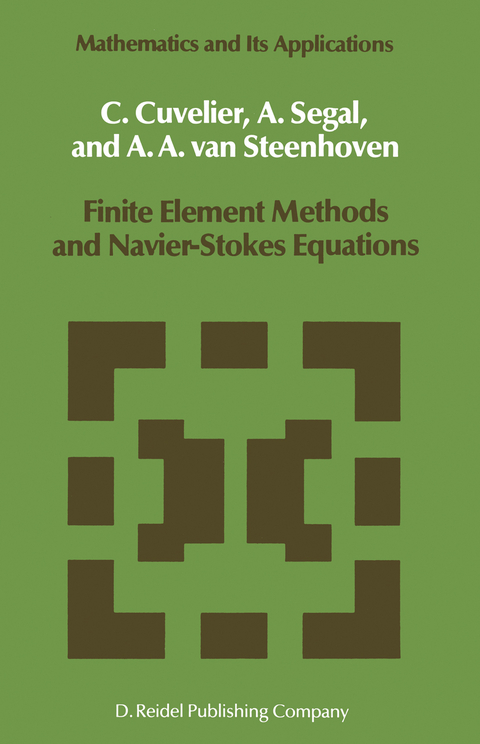
Finite Element Methods and Navier-Stokes Equations
Kluwer Academic Publishers (Verlag)
978-1-4020-0309-7 (ISBN)
I Introduction to the Finite Element Method.- 1 Examples of partial differential equations.- 2 Finite difference schemes for Poisson equation and convection-diffusion equation.- 3 The finite element method.- 4 Construction of finite elements.- 5 Practical aspects of the finite element method.- II Application of the Finite Element Method to the Navier-Stokes Equations.- 6 Alternative formulations of Navier-Stokes equations.- 7 The integrated method.- 8 The penalty function method.- 9 Divergence-free elements.- 10 The instationary Navier-Stokes equations.- III Theoretical Aspects of the Finite Element Method.- 11 Second order elliptic PDEs.- 12 Finite element approximations of variational problems.- 13 Error analysis of the FEM.- 14 Mixed Finite Element Methods.- IV Current Research Topics.- 15 Capillary free boundaries governed by the Navier-Stokes equations.- 16 Non-Isothermal flows.- 17 Turbulence.- 18 Non-Newtonian fluids.
| Reihe/Serie | Mathematics and Its Applications ; 22 | Mathematics and Its Applications ; 22 |
|---|---|
| Zusatzinfo | 504 p. |
| Sprache | englisch |
| Maße | 152 x 223 mm |
| Themenwelt | Mathematik / Informatik ► Informatik ► Theorie / Studium |
| Mathematik / Informatik ► Mathematik ► Analysis | |
| Mathematik / Informatik ► Mathematik ► Wahrscheinlichkeit / Kombinatorik | |
| ISBN-10 | 1-4020-0309-9 / 1402003099 |
| ISBN-13 | 978-1-4020-0309-7 / 9781402003097 |
| Zustand | Neuware |
| Informationen gemäß Produktsicherheitsverordnung (GPSR) | |
| Haben Sie eine Frage zum Produkt? |
aus dem Bereich


